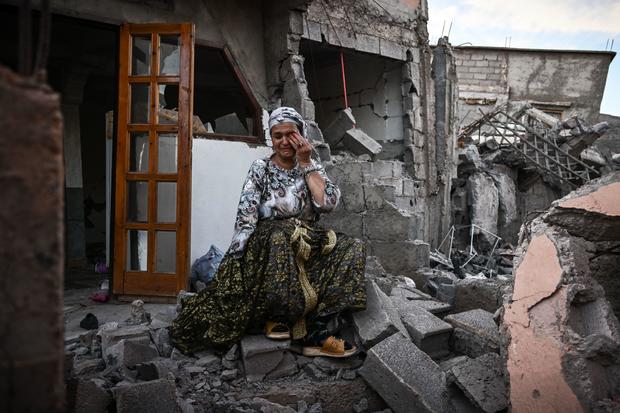A rare, powerful earthquake struck Morocco late Friday, killing more than 2,100 people, injuring at least 2,421 others and leaving behind widespread devastation.
Friday’s earthquake toppled buildings that couldn’t withstand the mighty temblor, trapping people in rubble and sending others fleeing in terror. The area was shaken again Sunday by a magnitude 3.9 aftershock, according to the U.S. Geological Survey. It wasn’t immediately clear if the aftershock caused more damage or casualties.

PHILIPPE LOPEZ/AFP via Getty Images
There was little time for mourning as survivors tried to salvage whatever they could from damaged homes.
Khadija Fairouje’s face was puffy from crying as she joined relatives and neighbors hauling possessions down rock-strewn streets. She had lost her daughter and three grandsons aged 4 to 11 when their home collapsed while they were sleeping less than 48 hours earlier.
“Nothing’s left. Everything fell,” said her sister, Hafida Fairouje.
The majority of the deaths, at least 2,122 as of Sunday, were in Marrakech and five provinces near the epicenter, the Interior Ministry reported. Search and rescue and debris removal teams have been out with dogs in the region searching for survivors and bodies.
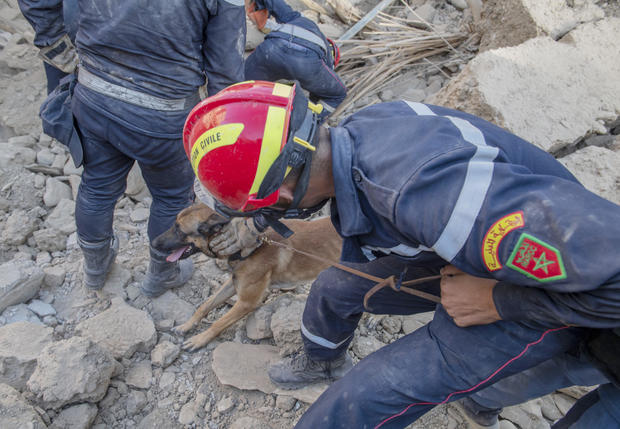
Abu Adem Muhammed/Anadolu Agency via Getty Images
International aid crews were poised to deploy, but some grew frustrated waiting for the government to officially request assistance.
“We know there is a great urgency to save people and dig under the remains of buildings,” said Arnaud Fraisse, founder of Rescuers Without Borders, who had a team stuck in Paris waiting for the green light. “There are people dying under the rubble, and we cannot do anything to save them.”
Help was slow to arrive in Amizmiz, where a whole chunk of the town of orange and red sandstone brick homes carved into a mountainside appeared to be missing. A mosque’s minaret had collapsed.
“It’s a catastrophe,” said villager Salah Ancheu, 28. “We don’t know what the future is. The aid remains insufficient.”

Hamza Motaki/Anadolu Agency via Getty Images
Those left homeless — or fearing more aftershocks — slept outside Saturday, in the streets of the ancient city of Marrakech or under makeshift canopies in hard-hit Atlas Mountain towns like Moulay Brahim. The worst destruction was in rural communities that are hard to reach because the roads that snake up the mountainous terrain were covered by fallen rocks.
Flags were lowered across Morocco, as King Mohammed VI ordered three days of national mourning starting Sunday. The army mobilized search and rescue teams, and the king ordered water, food rations and shelters to be sent to those who lost homes.
Some slept on the ground or on benches in a Marrakech park.

Said Echarif/Anadolu Agency via Getty Images
Tourists and residents lined up to give blood.
“I did not even think about it twice,” Jalila Guerina told The Associated Press, “especially in the conditions where people are dying, especially at this moment when they are needing help, any help.” She cited her duty as a Moroccan citizen.
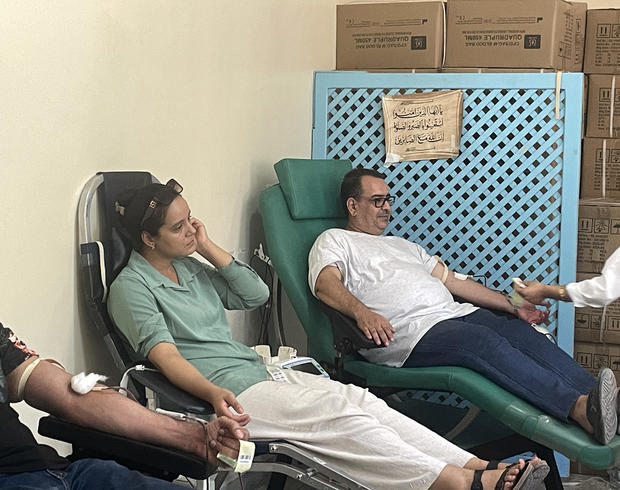
Hamza Motaki/Anadolu Agency via Getty Images
King Mohammed VI called for mosques to hold prayers Sunday for the victims, many of whom were buried Saturday amid the frenzy of rescue work nearby. According to Islamic custom, burial should happen quickly after death.
Distraught parents sobbed into phones to tell loved ones about losing their children.
Pope Francis prayed for Morocco from Vatican City on Sunday.
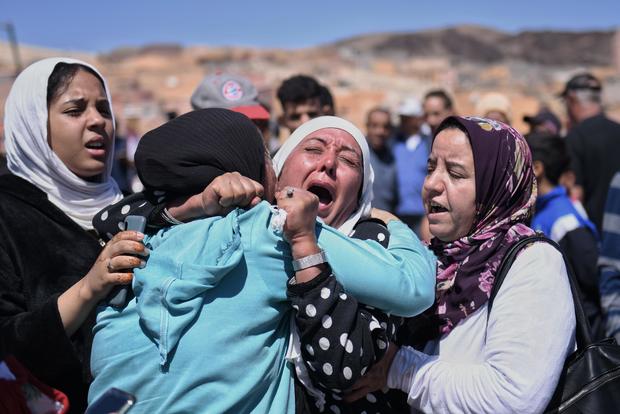
Fernando Sanchez/Europa Press via Getty Images
Rescuers backed by soldiers and police searched collapsed homes in the remote town of Adassil, near the epicenter. Military vehicles brought in bulldozers and other equipment to clear roads, MAP reported. Ambulances took dozens of wounded from the village of Tikht, population 800, to Mohammed VI University Hospital in Marrakech.
Many were trapped under the rubble.
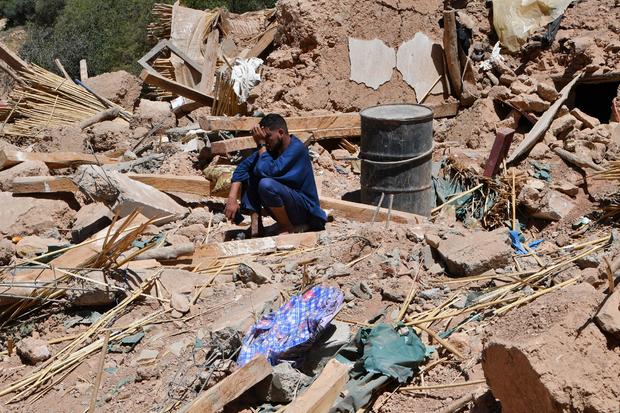
FETHI BELAID/AFP via Getty Images
Friday’s quake had a preliminary magnitude of 6.8 when it hit at 11:11 p.m., lasting several seconds, the USGS said. A magnitude 4.9 aftershock hit 19 minutes later, it said. The collision of the African and Eurasian tectonic plates occurred at a relatively shallow depth, which makes a quake more dangerous.
It was the strongest earthquake to hit the North African country in over 120 years, according to USGS records dating to 1900, but it was not the deadliest. In 1960, a magnitude 5.8 temblor struck near the city of Agadir, killing at least 12,000. That quake prompted Morocco to change construction rules, but many buildings, especially rural homes, are not built to withstand such tremors.
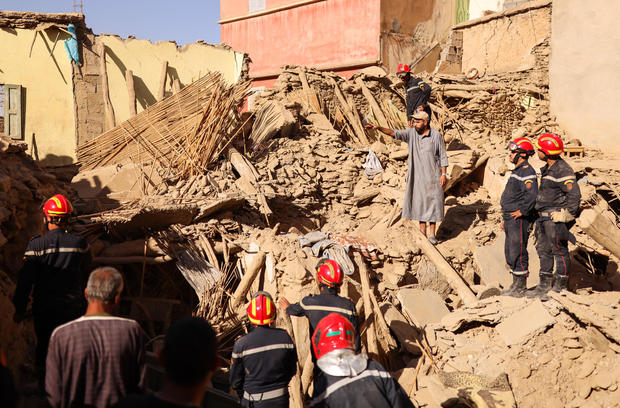
NACHO DOCE / REUTERS
